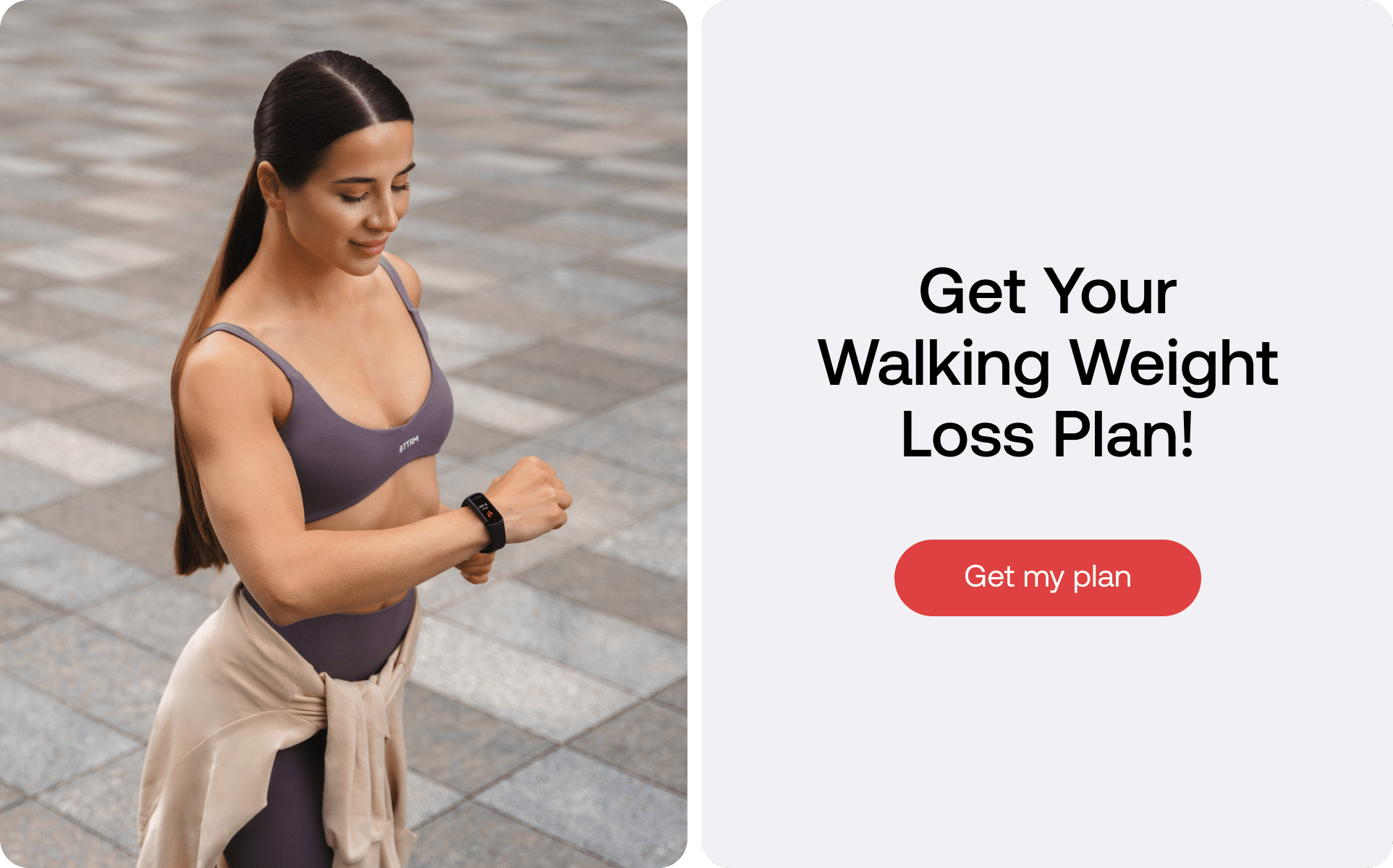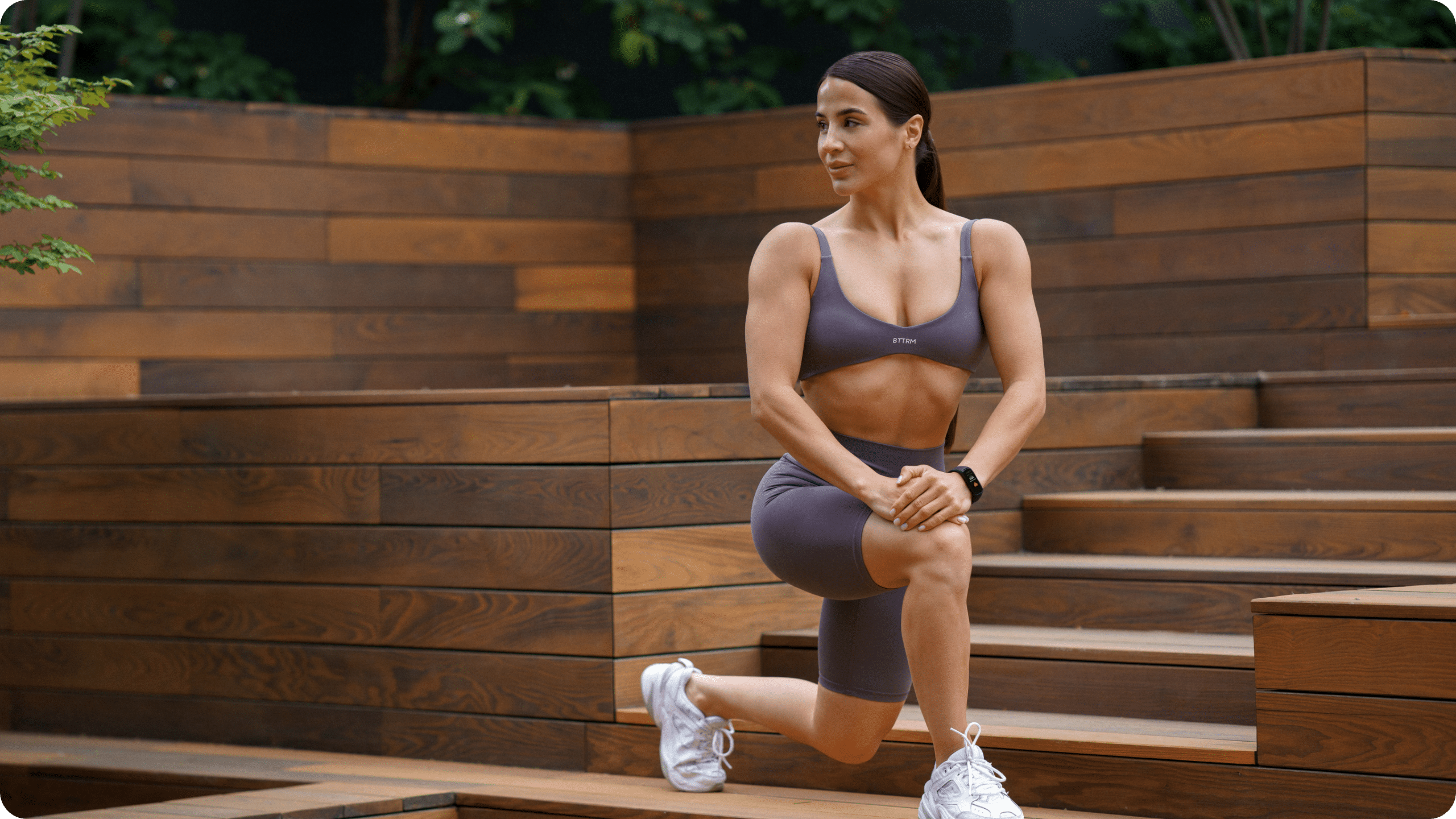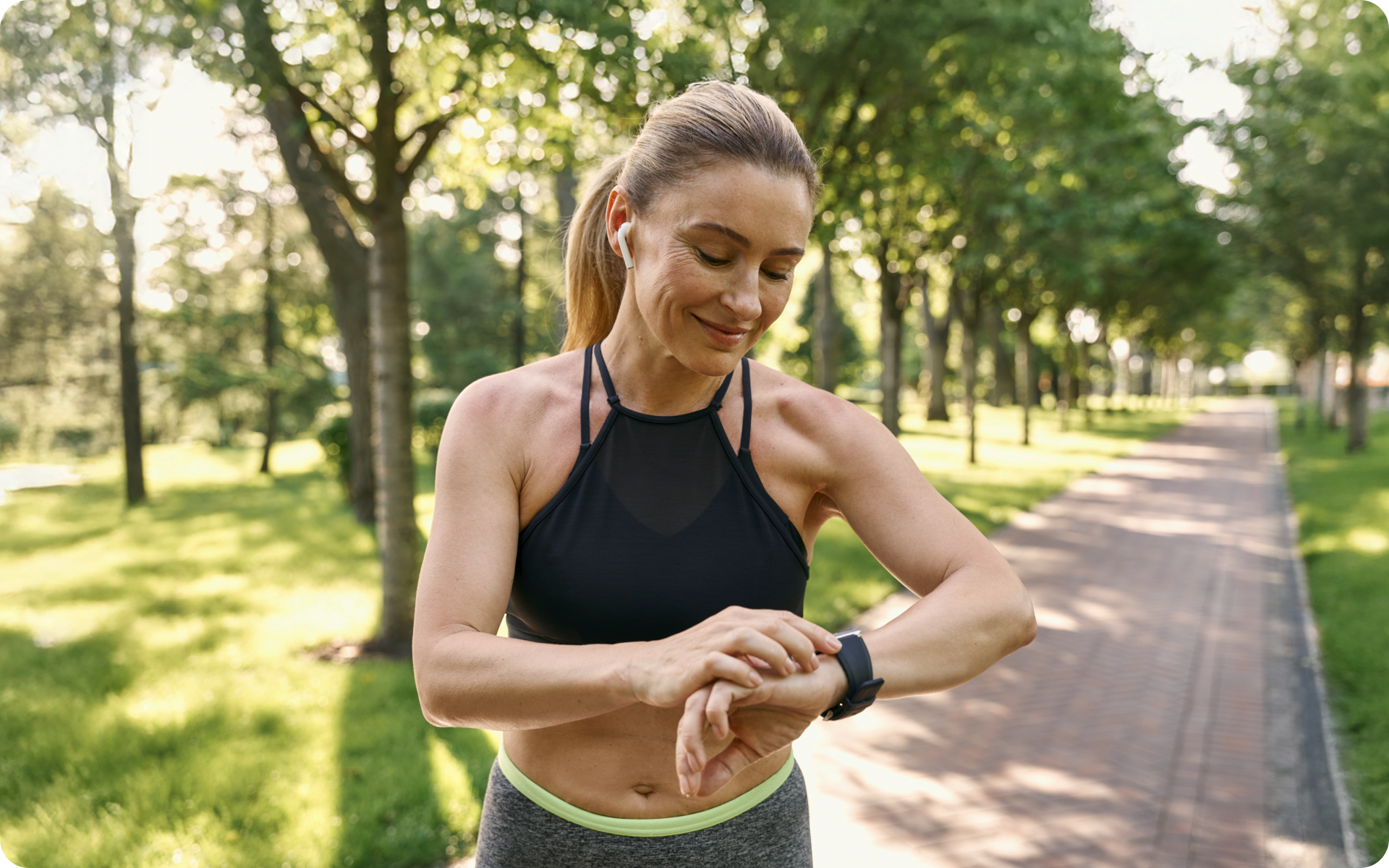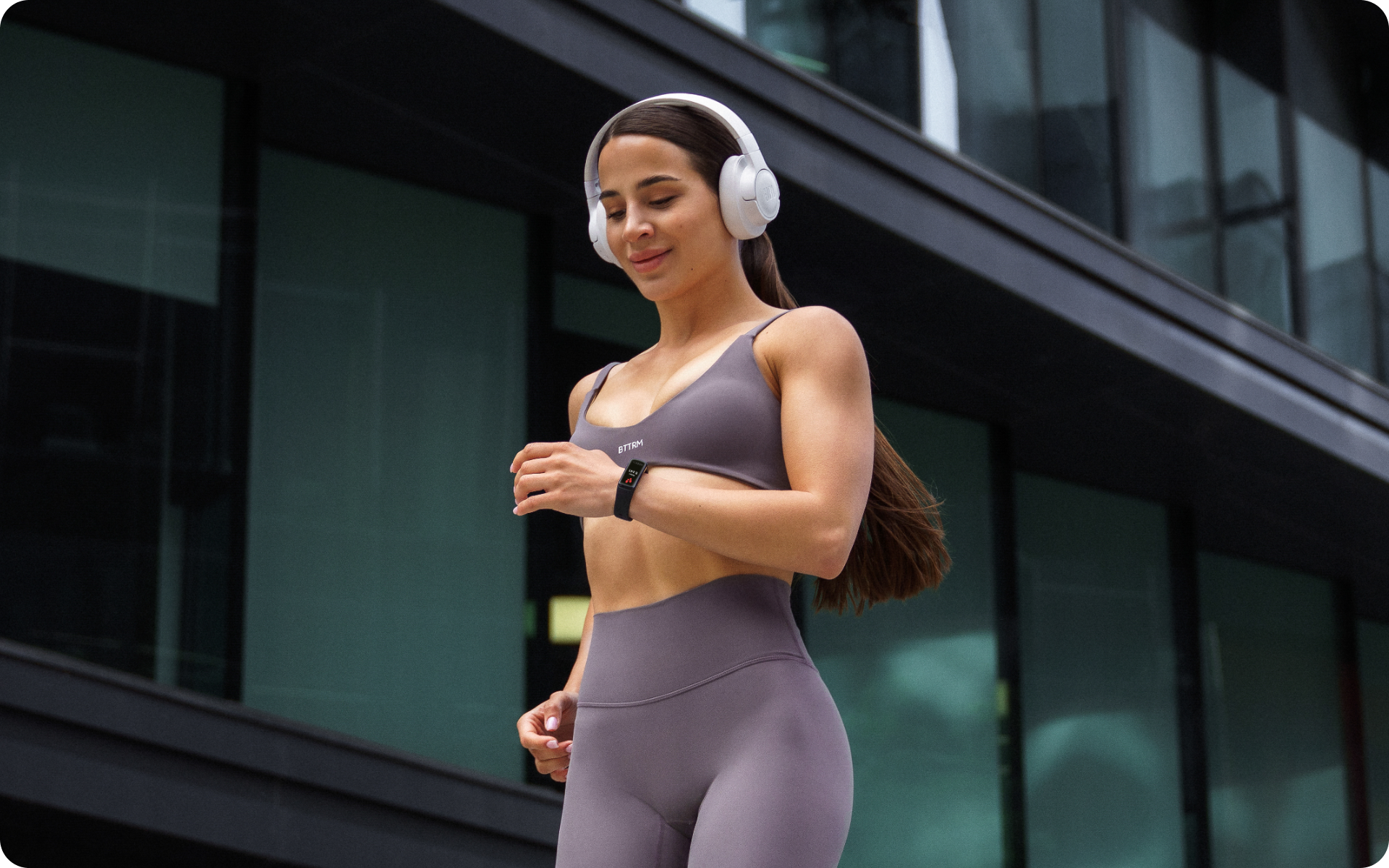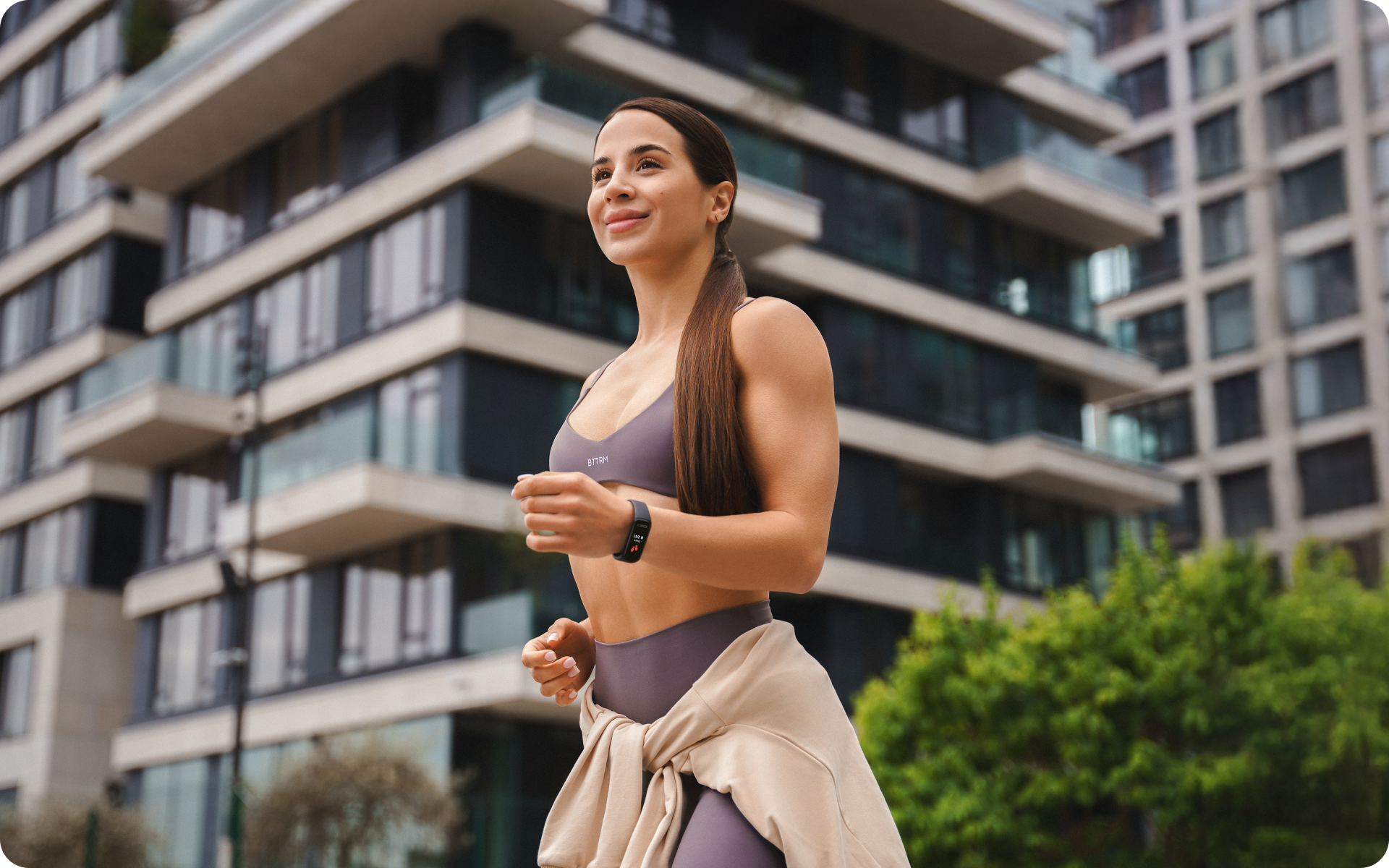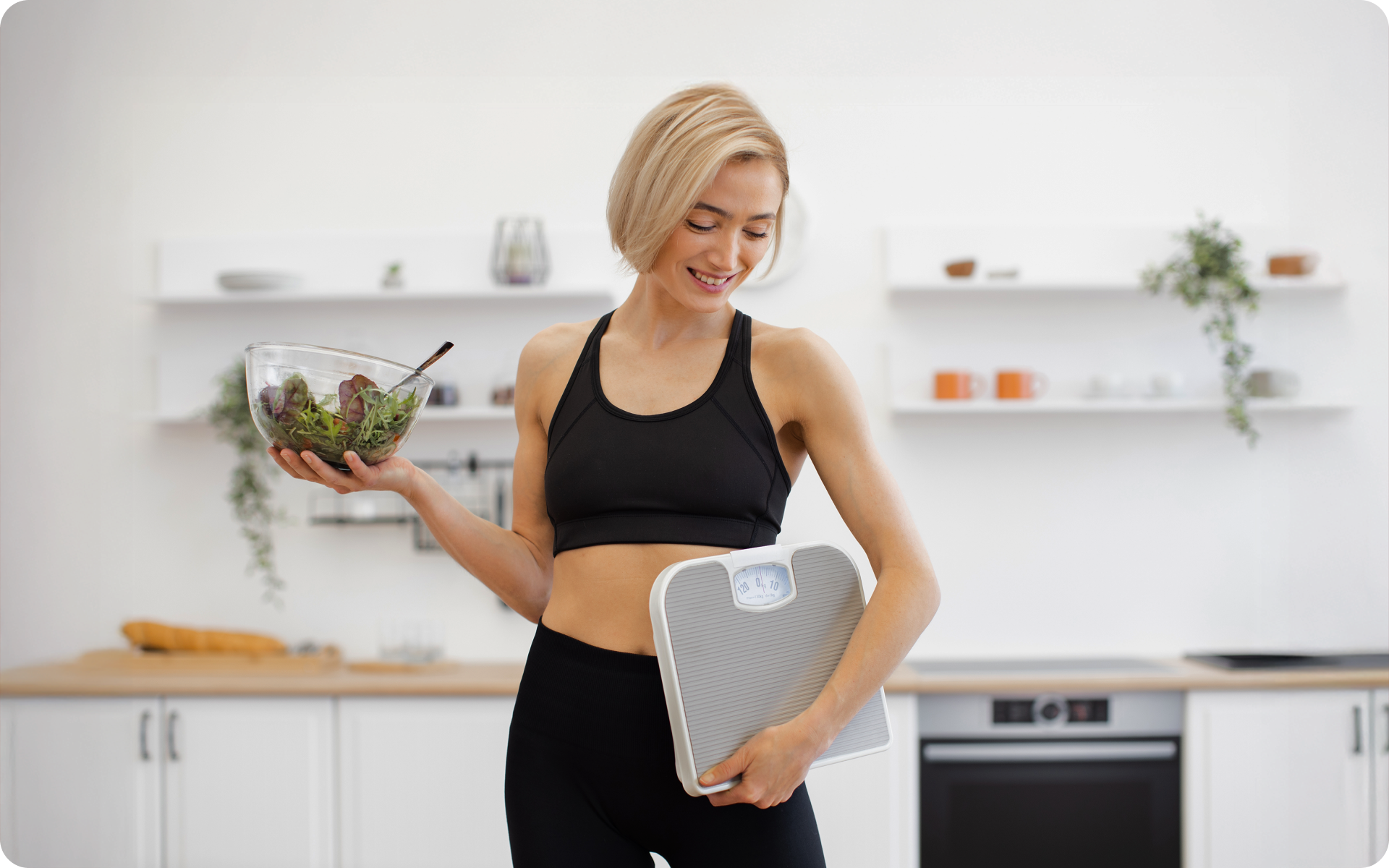Nutrition and exercise are important factors in weight loss. They can work together to create a calorie deficit, which is when you burn more calories than you consume.
Walking is a great form of exercise for weight loss. It’s low-impact, so it’s easy on your joints, and it can be done anywhere at any time. It’s also great for your mental health as it can help reduce stress and improve your mood (21).
The question is, should you eat before or after you walk to lose weight?
There is no definitive answer to this as both have benefits and drawbacks. Ultimately, it comes down to personal preference and what works best for you.
What’s the Difference Between Fasted and Fed Exercise?
Fasted exercise is when you work out on an empty stomach, without having eaten anything in the last few hours. This can be early in the morning, before breakfast.
Fed exercise is when you’ve eaten before working out. This could be a small snack or meal, depending on how much time you have before you exercise.
The main difference between the two is the way in which your body gets its energy. When you’re fasting, your body needs to burn stored energy (fat) for fuel. When you’re fed, your body can use glucose from the food you’ve eaten for energy.
Reasons why BetterMe is a safe bet: a wide range of calorie-blasting workouts, finger-licking recipes, 24/7 support, challenges that’ll keep you on your best game, and that just scratches the surface! Start using our app and watch the magic happen.
Should You Walk Before or After Eating?
You may walk before or after eating, provided that you feel comfortable. Whichever option allows you to walk long and/or hard enough to meet your weight loss goals is the best choice.
That being said, your body responds differently to fasted and fed exercise:
Ability to Use Fat for Fuel
Your body primarily uses fat and carbohydrates for fuel. Fat is stored as triglycerides in your fat cells. When you’re fasting and exercising, your body needs to break down triglycerides into free fatty acids to use for energy. This process is known as lipolysis (10).
Lipolysis is believed to be more efficient when you’re in a fasted state. This means your body can better use stored fat for fuel, which is believed to help with weight loss. Your body can still use stored fat for fuel, even if you’ve eaten before walking (10). It just may not be as efficient.
At the same time, carbs are stored in your muscles and liver as glycogen. Glycogen is broken down and used for energy during exercise (17).
Your body can use glycogen and glucose more efficiently when you’re fed. This means that you may have more energy for your walk if you eat before you work out.
Performance
Many wonder which way is best, regarding walking in a fasted or fed state. The answer is that it may depend on the exercise duration.
If you’re planning a short walk (30 minutes or less), you most likely won’t notice a difference in performance whether you’re fasted or fed.
However, if you’re exercising vigorously or for longer than 30 minutes, you may perform better if you’ve eaten beforehand. This is because your body will have more carbohydrates available for energy.
That being said, everyone is different. Some people may feel more energetic and perform better when they walk on an empty stomach, while others may feel sluggish and have less energy. It’s important to experiment to see what works best for you.
Read more: The 28-Day Indoor Walking Weight Loss Challenge Explained
Verdict: Is It Better to Walk Then Eat or Eat Then Walk?
Exercising fasted is thought to make your body burn fat more efficiently during your workout. However, this doesn’t translate to greater loss of body fat over time.
A small study of young healthy female participants found that those who exercised while fasted didn’t lose more body fat than those who exercised after having eaten (2). Both groups lost a similar amount of weight and fat mass.
Ultimately, there are many other factors at play that determine weight loss, including diet and genetics. What’s probably more important for weight loss is the total energy you take in and the total energy you burn throughout the entire day, rather than the time of eating versus exercise.
However, if you exercise in a fasted state, it’s important to eat after your walk. This will help refuel your body and replenish glycogen stores.
A common misconception is that you must eat immediately after working out in order to maximize glycogen replenishment. However, research has suggested that you have up to four hours after exercise to eat without affecting your glycogen stores (7).
If you don’t have time to eat immediately, drink a carbohydrate-rich beverage or eat a small snack. You should then aim to eat a meal containing carbs, protein, and healthy fat within the next four hours.
To summarize, there isn’t one correct answer to the question of whether you should eat before or after walking. It is dependent on your goals and preferences. If you want to maximize fat burning during your workout, exercise on an empty stomach.
If you’re looking for an energy boost, eat before your walk, and if you’re concerned about replenishing glycogen stores, aim to eat within four hours after you exercise.
What’s most important is that you listen to your body and do what feels best for you. Experiment with both fasted and fed walks and see what works best for your schedule, goals, and energy levels.
Avoid fasted exercise if you experience any of the following symptoms (11):
- Lightheadedness
- Dizziness
- Nausea
- Headache
- Excessive hunger
- Weakness
These symptoms may indicate that your blood sugar is too low (11). Eating before exercise can help prevent this.
If you have diabetes, you should talk to your doctor before exercising in a fasted state. This is because blood sugar levels can drop too low during and after exercise when you haven’t eaten.
Checking your blood sugar before and after exercise can help you gauge how well your body responds. If your blood sugar levels drop too low, you may need to eat a small snack before or during exercise.
Is It Good to Walk Immediately After Eating?
Walking immediately after eating can be a good way to improve digestion and blood sugar control. A short walk after a meal can help with the absorption of nutrients and prevent spikes in blood sugar levels (1).
However, if you’re planning on a longer or more intense walk, it may be best to wait at least an hour after eating before you start your exercise session. This will give your body enough time to digest the meal and avoid any discomfort during your walk.
Ultimately, the best time to walk is whenever you feel most comfortable and energized. Whether you choose to eat before or after your walk, you should make sure you listen to your body and fuel it accordingly for optimal performance and results.
BetterMe app will provide you with a host of fat-frying fitness routines that’ll scare the extra pounds away and turn your body into a masterpiece! Get your life moving in the right direction with BetterMe!
How to Maximize the Weight-Loss Effects of Walking
Walking is a great form of exercise for weight loss (21), regardless of whether you eat before or wait until afterward. To increase the number of calories you burn and maximize the weight-loss effects of walking, you should:
Increase the Intensity of Your Walks
Intensity refers to how hard your body works to perform an activity. The greater the intensity, the more calories you’ll burn.
You can increase the intensity of your walks by:
- Walking faster
- Inclining the treadmill or walking uphill
- Wearing a weight vest
- Carrying dumbbells
- Walking with resistance bands around your ankles
- Adding Intervals
Interval training alternates periods of high-intensity exercise with periods of low-intensity exercise. This type of training can help you burn more calories and fat.
One study has shown that interval training increases the amount of fat burned with continuous moderate-intensity exercise after interval training (9).
To add intervals to your walking routine:
- Start with a five-minute warm-up at a moderate pace
- Increase your speed for 30 seconds, then return to your moderate pace for two minutes
- Repeat this pattern until you reach your desired duration
- End with a five-minute cool-down at a moderate pace
- Include strength training
Strength training helps build muscle, and muscle tissue burns more calories than fat tissue. This means that strength training can help you lose weight and keep it off (19).
One study showed that those who did strength training for 20 minutes three times per week increased lean body mass (muscle) more than those who only did aerobic exercise, although both groups lost a similar amount of weight and fat (4).
You can add strength training to your walking routine by doing bodyweight exercises, including push-ups, lunges, and squats, before, during, or after your walk.
Change Your Diet
A low-calorie, nutrient-rich diet is essential for weight loss. Eating fewer calories than you burn promotes weight loss, and the right foods will help optimize fat burning (14).
You should focus on eating mostly whole, minimally processed foods, such as fruits, vegetables, whole grains, lean protein, and healthy fats. These foods are more filling and tend to be lower in calories than highly processed foods.
Some foods may also help increase the number of calories you burn, including:
- Coffee – Studies have suggested that the caffeine in coffee may slightly increase energy expenditure and boost metabolism (13).
- Green tea – Green tea contains caffeine and catechins, which may promote fat burning (20).
- Cayenne pepper – Capsaicin, a compound that is found in cayenne pepper, may increase metabolic rate (15).
Make sure you drink plenty of water throughout the day to remain hydrated and prevent hunger pangs.
Prioritize Rest and Rejuvenation
Weight loss is influenced by many factors, which include sleep and stress (5).
Getting enough quality sleep is important for weight loss. One review found that short sleep duration and poor sleep quality may be linked to an increased risk of obesity (18). Therefore, you should aim to get 7-9 hours per night of quality sleep.
Chronic stress may also contribute to weight gain. When you’re stressed, your body releases the hormone cortisol. This increases appetite and may lead to cravings for high-calorie, sugary foods (16).
To reduce stress and promote restful sleep:
- Practice yoga or meditation
- Get a massage
- Spend time in nature
- Exercise regularly
- Have a relaxing bedtime routine
- Go to bed at the same time every night
- Make sure your bedroom is dark, quiet, and cool
- Limit your caffeine and alcohol intake
Read more: Walking Treadmill Workout: Exploring the 12-3-30 Routine for Fitness Advancement
FAQs
Is it OK to eat and walk at the same time?
Eating while you walk isn’t necessarily a bad thing. It can be convenient for those with busy schedules, and it may allow you a few minutes away from your desk or workspace.
However, if you’re trying to lose weight, it’s best to focus on one task at a time – either walking or eating. This will help you be more mindful of your food intake and may prevent overeating (12).
How many steps should you walk after dinner?
There is no specific number of steps that must be taken after dinner. It ultimately depends on your personal goals and fitness level. However, a short walk after eating can help with digestion and prevent blood sugar spikes (1).
If you’re looking to incorporate more walking into your daily routine, you should aim for at least 10,000 steps per day. This is considered to be a reasonable goal for most adults (8).
If you have specific weight loss goals, you may need to aim for more steps and longer walking distance, or increase the intensity of your walks.
Find out more in our previous blog – Is Walking 2 Miles A Day Enough For Weight Loss?
Check out our blog on Walking 30 Minutes a Day for more tips and information on how to incorporate walking into your daily routine for optimal health and weight loss.
What are the benefits of walking before dinner?
Walking before dinner can help you increase your daily step count, which is a key factor in weight loss.
A short walk before dinner can also serve as a healthy habit to unwind after a long day of work and sitting at your desk. This can help reduce stress and prevent mindless snacking while you prepare dinner.
Is it better to walk during the day or night?
It’s better for most people to walk during the day as night-time exercise can potentially cause sleep disturbances (3). When you exercise too close to bedtime, your body may still be in an activated state and you could have difficulty falling asleep.
However, if you prefer walking at night and it doesn’t negatively affect your sleep, then that is also fine.
How long should you wait to walk after eating breakfast?
You can walk immediately after breakfast if you feel comfortable doing so. However, some people may experience discomfort if they exercise too soon after they’ve eaten(6).
If this is the case for you, it’s recommended that you wait at least 30 minutes to an hour before you walk. This may help prevent stomach discomfort and allow your food to digest properly.
In our article, 28-Day Indoor Walking Weight Loss Challenge, we discuss the benefits of incorporating walking into your daily routine for weight loss.
The Bottom Line
Both fasted and fed exercise have their benefits and drawbacks. It ultimately comes down to personal preference and what works best for you.
Walking is a great way to lose weight. However, to see results, you must do it regularly and make some other lifestyle changes too. Try following the tips in this post to create a comprehensive approach to weight loss.
DISCLAIMER:
This article is intended for general informational purposes only and does not serve to address individual circumstances. It is not a substitute for professional advice or help and should not be relied on for making any kind of decision-making. Any action taken as a direct or indirect result of the information in this article is entirely at your own risk and is your sole responsibility.
BetterMe, its content staff, and its medical advisors accept no responsibility for inaccuracies, errors, misstatements, inconsistencies, or omissions and specifically disclaim any liability, loss or risk, personal, professional or otherwise, which may be incurred as a consequence, directly or indirectly, of the use and/or application of any content.
You should always seek the advice of your physician or other qualified health provider with any questions you may have regarding a medical condition or your specific situation. Never disregard professional medical advice or delay seeking it because of BetterMe content. If you suspect or think you may have a medical emergency, call your doctor.
SOURCES:
- After Dinner Rest a While, After Supper Walk a Mile? A Systematic Review with Meta-analysis on the Acute Postprandial Glycemic Response to Exercise Before and After Meal Ingestion in Healthy Subjects and Patients with Impaired Glucose Tolerance (2023, link.springer.com)
- Body composition changes associated with fasted versus non-fasted aerobic exercise (2014, ncbi.nlm.nih.gov)
- Effect of Nighttime Exercise on Sleep Quality Among the General Population in Riyadh, Saudi Arabia: A Cross-Sectional Study (2023, ncbi.nlm.nih.gov)
- Effects of aerobic and/or resistance training on body mass and fat mass in overweight or obese adults (2015, ncbi.nlm.nih.gov)
- Factors Influencing Weight Loss Attempts and Long Term Weight Loss Maintenance (2021, researchgate.net) l
- Food-dependent, exercise-induced gastrointestinal distress (2011, ncbi.nlm.nih.gov)
- Fundamentals of glycogen metabolism for coaches and athletes (2018, ncbi.nlm.nih.gov)
- How many steps/day are enough? for adults (2011, biomedcentral.com)
- Interval Training Burns More Fat, Increases Fitness, Study Finds (2007, sciencedaily.com)
- Lipolysis – A highly regulated multi-enzyme complex mediates the catabolism of cellular fat stores (2011, ncbi.nlm.nih.gov)
- Low Blood Glucose (Hypoglycemia) (2021, niddk.nih.gov)
- Mindful Eating: The Art of Presence While You Eat (2017, ncbi.nlm.nih.gov)
- Normal caffeine consumption: influence on thermogenesis and daily energy expenditure in lean and postobese human volunteers (1989, pubmed.ncbi.nlm.nih.gov)
- Optimal Diet Strategies for Weight Loss and Weight Loss Maintenance (2021, ncbi.nlm.nih.gov)
- Peppers and their constituents against obesity (2023, link.springer.com)
- Psychosocial Stress and Change in Weight Among US Adults (2009, ncbi.nlm.nih.gov)
- Skeletal muscle energy metabolism during exercise (2020, nature.com)
- Sleep and obesity (2013, ncbi.nlm.nih.gov)
- Strength training: Get stronger, leaner, healthier – Mayo Clinic (2023, mayoclinic.org)
- The effects of catechin rich teas and caffeine on energy expenditure and fat oxidation: a meta‐analysis (2011, onlinelibrary.wiley.com)
- The multifaceted benefits of walking for healthy aging: from Blue Zones to molecular mechanisms (2023, link.springer.com)

